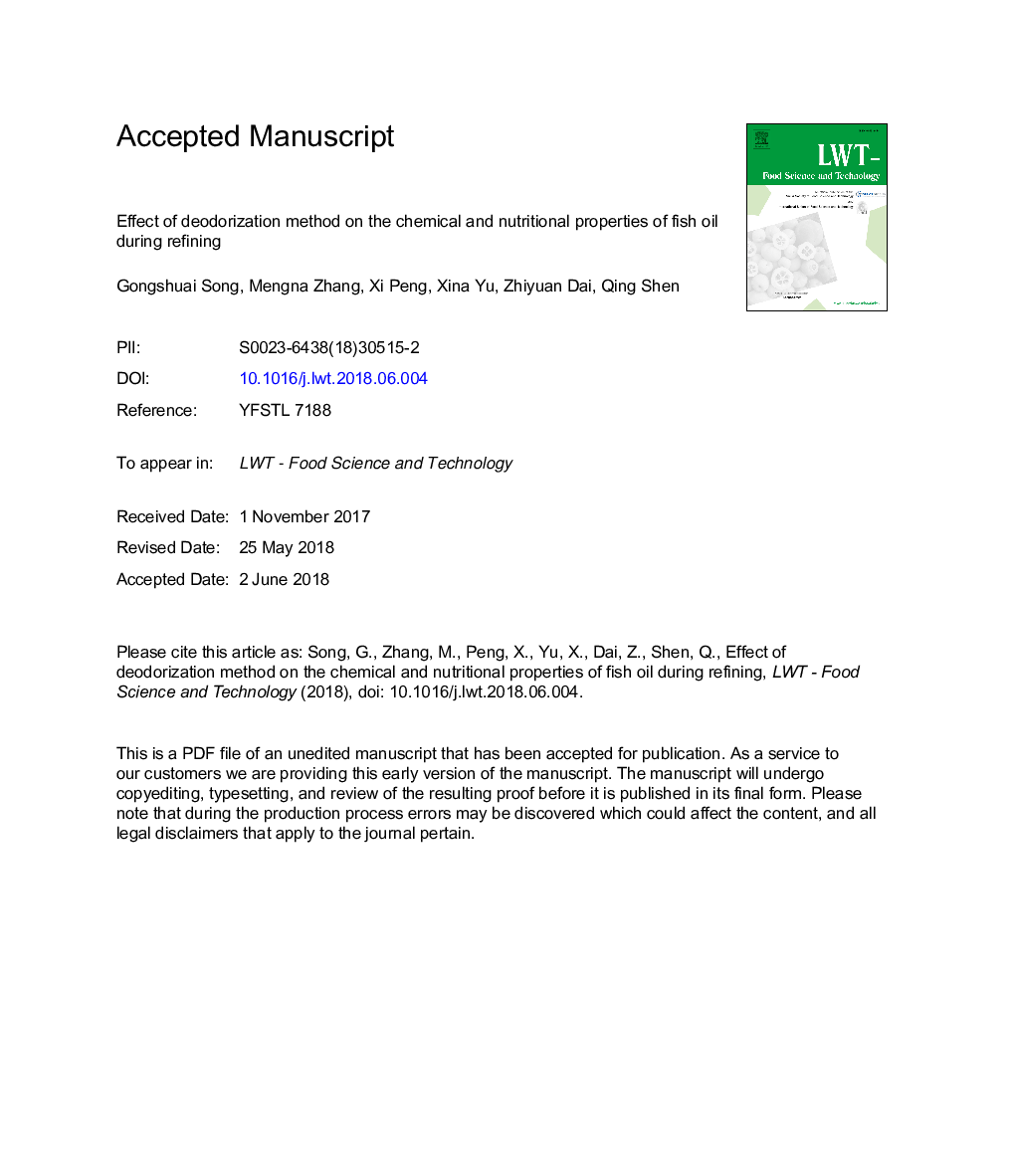| Article ID | Journal | Published Year | Pages | File Type |
|---|---|---|---|---|
| 8890659 | LWT - Food Science and Technology | 2018 | 32 Pages |
Abstract
Fish oil is a health beneficial product but contains unpleasant odoriferous substances originating from the degradation of lipids and proteins. In this study, several deodorization methods including liquid-liquid extraction (LLE), green tea polyphenol (GTP) treatment, and solid-phase adsorption (SPA) with activated clay, zeolites or diatomite were studied in order to replace the industrially used molecular distillation (MD) and steam distillation (SD). These techniques were compared in terms of physicochemical characteristics, sensory properties, saturability and cis/trans configuration of fatty acids, and volatile compounds, and the results showed significant difference (p valueâ¯â¤â¯0.05, nâ¯=â¯3). The alkaline ethanol based LLE was superior in reducing acidity, peroxide, and saponification value, enriching EPA and DHA, removing unpleasant volatiles, and bleaching. Its low temperature condition can well avoid the peroxidation and degradation of lipids and geometrical isomerization of the natural cis bond. Afterwards, the method was validated and the values for intra-day repeatability (RSDs) fell within the range of 0.22-1.96%. For the inter-day repeatability, RSDs were less than 5.37% for all analytes. In conclusion, this method showed advantages with low cost, high efficient, and simplified procedure in the deodorization of crude fish oil.
Related Topics
Life Sciences
Agricultural and Biological Sciences
Food Science
Authors
Gongshuai Song, Mengna Zhang, Xi Peng, Xina Yu, Zhiyuan Dai, Qing Shen,
